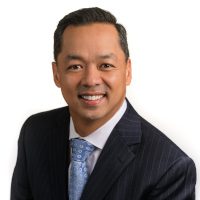The following is a guest article by Ferdinand Hamada, Managing Director of Healthcare Cybersecurity at MorganFranklin Consulting
The healthcare sector has faced an unprecedented surge of serious cybersecurity threats in recent months. Continuity of patient care while safeguarding patient data and organizational systems has never been more crucial. As the industry grapples with “critical” vulnerabilities – threats which not only expose sensitive patient data but also open the door to potential remote code execution, granting hackers the highest level of privileges – implementing strategic security measures is imperative.
From urgent calls to update SolarWinds to the unsettling news that Mirth Connect can be exploited without authentication, the industry finds itself on high alert. Healthcare security leaders should consider using three key pillars of defense that cover their people, processes, and technology in more reliable ways, ensuring threats don’t result in the leak of personally identifiable patient information or compromise their organization’s reputation.
Implementing Key IAM Practices
Identity and Access Management (IAM) is a first line of defense against critical cybersecurity threats. The implementation of core IAM practices – technical controls coupled with the right process and governance – provides a barrier against unauthorized access. Organizations can ensure that only authenticated individuals gain access to sensitive systems and data by implementing role-based access rules, helping to mitigate the risk of remote code execution and the potential compromise of patient information.
IAM not only protects against external threats but also reduces internal risks. Limiting access to only necessary personnel minimizes the attack surface, making it significantly harder for cyber adversaries to exploit vulnerabilities. In the context of the Health Insurance Portability and Accountability Act (HIPAA) and other growing, changing regulations, IAM practices are necessary to fortify defenses while also meeting regulatory requirements.
Developing Onboarding and Offboarding Checklists
The fluid nature of healthcare staffing, with professionals regularly joining and leaving organizations, demands a controlled approach to managing employee permissions. Developing comprehensive onboarding and offboarding checklists is a critical component of IAM security. These checklists serve as a key control mechanism, ensuring that employees have the right level of access to data and systems based on their individual responsibilities, even as those roles can change more frequently than in some other sectors.
Effective onboarding procedures guarantee that new staff members receive necessary access to perform their duties efficiently. On the other side, offboarding checklists help safeguard against potential security breaches when employees depart. By promptly revoking access and conducting thorough permissions reviews during staff transitions, healthcare organizations minimize the window of vulnerability, reducing the risk of unauthorized access and exploitation.
In both cases, onboarding and offboarding are also opportunities for security awareness training. Organizations can use these opportunities to highlight best practices for maintaining strong security posture, such as proper password management, identification of potential business email compromise (BEC) and phishing attacks, and myriad other red flags to watch for.
Centralizing IT Teams’ Monitoring
Centralizing IT monitoring can also offer a comprehensive view of the network to improve security. By consolidating security monitoring, healthcare organizations can detect and respond to potential threats more efficiently. This approach also ensures that security incidents are identified promptly, allowing for a swift and targeted response.
Centralization also allows for the automation of certain rote tasks. Healthcare organizations should ensure that their security tech stack includes advanced tools and technologies for real-time network monitoring, threat detection, and rapid response, making the digital component robust yet agile. Combining the human touch of security teams with technology results in a more comprehensive and proactive strategy, reducing the risk of overlooking critical indicators of potential threats.
Centralizing IT monitoring is about enhancing visibility without creating additional risks. It enables healthcare organizations to proactively identify anomalous activities, potential breaches, or vulnerabilities in real-time. By maintaining a holistic view of the network, IT teams can quickly respond to threats, preventing critical cybersecurity issues from escalating.
The Way Forward
In the face of critical cybersecurity threats, healthcare organizations need a comprehensive understanding of their security perimeter and a unified defensive strategy. By combining the industry knowledge of healthcare professionals with the specialized expertise of IT and security teams, organizations can bolster their security posture and respond effectively to emerging threats.
Regardless of the industry or organization, security is everyone’s responsibility – and healthcare cyber defense requires a particularly multifaceted approach. As the industry continues to evolve, these proactive measures not only mitigate risks but also contribute to overall healthcare cyber resilience, ensuring the safety of patient data and the continuity of exceptional care delivery.
 About Ferdinand Hamada
About Ferdinand Hamada
Ferdinand Hamada is a Managing Director for the cybersecurity practice at MorganFranklin and leads the Healthcare, Pharmaceutical, & Life Sciences (HPLS) industry sector. Ferdinand is responsible for expanding the go-to-market strategy specifically within the HPLS industry, which includes client growth and quality oversight of the HPLS client portfolio and delivery team. Additionally, Ferdinand is an active thought leader in the IT, Risk, and cybersecurity space as he contributes to various publications and speaks at a variety of different forums and mediums.
Prior to joining MorganFranklin Consulting, Ferdinand was the Vice President of IT and Chief Information Security Officer (CISO) at Catalent Pharma Solutions where he led a global team in various transformation initiatives in the risk, security, compliance, and overall enterprise IT strategy. Ferdinand was also at KPMG Consulting focusing on IT Advisory in a diverse portfolio of engagements for several of their top pharmaceutical clients. Additionally, Ferdinand held various positions within Information Technology at Cardinal Health and Merck.
Ferdinand is viewed as a go-to problem solver that supports the enablement of business goals and objectives. He is passionate to serve his clients providing targeted solutions to reduce risk and address client issues and challenges. As a result, Ferdinand has been awarded various accolades throughout his career including one of the highest accolades winning the President’s Chairman’s award for outstanding performance.













